What Landing a Rover on Mars Teaches You About Leadership and Teamwork
In his new book, NASA engineer Adam Steltzner shares his insights on how to inspire people to make the impossible possible
:focal(2085x728:2086x729)/https://tf-cmsv2-smithsonianmag-media.s3.amazonaws.com/filer/36/70/36701c43-9996-4ec0-aa0a-a3f89b7ae153/adam_steltzner_at_landing.jpg)
Adam Steltzner wasn’t exactly sure what to wear when presenting his bold idea for landing the Curiosity rover on Mars to NASA’s top brass. The dress code at the agency’s Jet Propulsion Laboratory in Pasadena, California, where the engineer works, is a little looser than at Washington headquarters.
“I wanted to show respect, but I also wanted to be myself,” Steltzner writes in his new book, The Right Kind of Crazy. To complement his dark pompadour, he went with a 1950s blazer, a loud belt buckle and cowboy boots.
A daredevil, Steltzner was a fitting choice to lead Curiosity’s entry, descent and landing on Mars. He and his team had to make the seemingly impossible possible: slow a one-ton rover barreling at a speed greater than 13,000 miles per hour and land it gently so not to bore a fiery hole into the planet’s surface. Their solution, called the “Sky Crane” maneuver, required a supersonic parachute, rockets and cables. Steltzner himself describes it as “something Wile E. Coyote might rig up with ACME Company products.”
So when the engineer explained the plan to Mike Griffin, then-administrator of NASA, Griffin said, “It might just be the right kind of crazy.”
The capsule carrying the Curiosity rover was launched from Cape Canaveral on November 26, 2011. Nearly nine months later, on August 5, 2012 (Pacific Time), it successfully landed in Mars’ Gale Crater—to cheers around the world, perhaps the loudest inside the Spaceflight Operations Facility at the Jet Propulsion Laboratory where Steltzner and others in pale blue “Curiosity Landing” polo shirts were overseeing the mission.
In its first year on Mars alone, Curiosity took more than 72,000 images and fired some 75,000 laser shots to study the planet’s composition. It has captured pictures of sand dunes and a sunset, not to mention it detected nitrogen on Mars’ surface and confirmed that streams and lakes existed there more than three billion years ago.
In The Right Kind of Crazy, Steltzner, one of Smithsonian magazine's 2013 American Ingenuity Award winners, shares both details about his experience designing, building and testing the Sky Crane landing system and lessons he’s learned about how to lead people to achieve spectacular feats.
Steltzner is now the chief engineer for the Mars 2020 project, an endeavor that in four years aims to land a similar rover on Mars, but this time with the ability to drill down into the rocky surfaces of the planet and place these core samples in hermetically sealed containers for eventual return to Earth.
It was a moment on Highway 101 that set you on your path to building spacecraft at the Jet Propulsion Laboratory.
I was listless. I was hoping to have lightning strike and become a world famous rock star. I was playing small venues around the San Francisco Bay Area in a band that was not that good. One night, and I think it was in the fall, because the skies were particularly clear up in Marin County, I was coming home when I noticed that a set of stars, which I had previously seen in the night sky over the East Bay, over Oakland, were sitting over the Golden Gate and Marin headlands on the opposite side of the sky.
I had done poorly in high school and had not paid attention. Evidently I had missed that whole Earth spinning on its axis thing. I became curious. I remembered something is moving in respect to something else, but I couldn’t really remember any of the details. So I followed my curiosity down to the local community college. I showed up to see if they had any classes on astronomy to teach me why the stars were moving, which is what I thought was going on. They did, but it had a prerequisite of a conceptual physics course. I signed up for both. The astronomy course got cancelled because it didn’t have enough students, and I found myself taking “Physics for Poets,” or physics without math. That changed everything.
How was the Curiosity mission first described to you?
I worked as a consultant for it in the very early years. It would eventually become the Mars Science Laboratory (MSL), but it actually started out with the same acronym, but as the Mars Smart Lander. It was going to put a big rover on the surface of Mars. When I first joined the project in 2003, the big rover was a little too big. My first task was to try to shrink it down.
Ultimately, the rover was 2,000 pounds. Can you describe the “Sky Crane” maneuver that allowed you to land it on the surface of Mars?
The Sky Crane maneuver is the act of lowering the rover below its jet backpack as the two continue to descend towards Mars until the rover’s weight is taken up by the Martian surface. That is sensed in the lack of tension on the ropes connecting the jet backpack to the rover. The rover cuts itself free and the jet backpack flies away to a safe distance.
All deadlines seem fungible when compared to those that are “set by celestial mechanics,” as you describe in the book. You had to hit a target some 350 million miles away at the right moment. What’s it like to work with this kind of timeline?
Our projects are kind of created in a bit of a vise. Time is not flexible and usually our budget is not flexible. To make it a trifecta, what we are trying to do is not flexible. That’s a lot of pressure.
This kind of work is not for everybody. You are inventing with a massive deadline. It can be very anxiety provoking. You need your creative juices to flow—individually, yes, but collectively, too, the team’s creative juices have got to flow. There is no one person who does the lion’s share of the work here. This is a 100 percent collaborative, cooperative effort. You have to have a group of people who can operate under the pressures of an unmovable time deadline.
When faced with a challenge, you remind yourself to “hold on to the doubt” and “sit in the Dark Room.” What do you mean?
Frequently, when you are in this race with time, and you’ve got to create solutions to problems, you will come up against blocks. You will come up against times when you don’t have the answer. That is the Dark Room. The Dark Room is that place of darkness where you see no way out. You have a problem, you’ve got the deadline, but you don’t know how you are going to make it. It’s very easy to panic, to get locked in to unproductive behaviors. The Dark Room is a place I like to call out for myself and others. It’s anxious. Let’s not panic, and let’s sit with the open question. That’s where the “hold on to the doubt” comes from. It was something I noticed when I was a student of engineering and physics. I was most likely to go astray by anxiously jumping to the answer because it was so uncomfortable to sit with the open question. But the open question usually has the answer sitting in it. To sit with the open question, you have to be able to hold on to that doubt, not to run away with it, just sit with it. Let the answer emerge.
With Curiosity, at what point did you find yourself most in the dark?
Early on, before the Sky Crane, we had a couple of different landing approaches, one using air bags and the other using this thing we called the pallet, that just didn’t work. In the fall of 2003, we came together with a dozen people or so, because we were in a Dark Room. We didn’t know what the way out was. We had a big rover. We wanted to put it on Mars, but we didn’t know how we were going to get it there.
What was the biggest surprise—maybe the most counterintuitive discovery—in all of the research and development of the Sky Crane?
We spent a long time worried about the pendulum mode. When you imagine two vehicles attached by a rope, and the upper vehicle has rockets and supporting the lower vehicle, it is very easy to think about this swinging back and forth and this pendulum-like behavior. We were deathly afraid of it. We always invite outside eyeballs into the game to help find the holes that we’re not seeing, and everybody in our review community was very focused on the pendulum mode. What we found, counter-intuitively, is that the hardest part is actually an axial, pogo-y mode that looks like one of those games where you have a ball on elastic and a paddle and you go boink, boink, boink, boink. It was that kind of behavior that we struggled with the most.
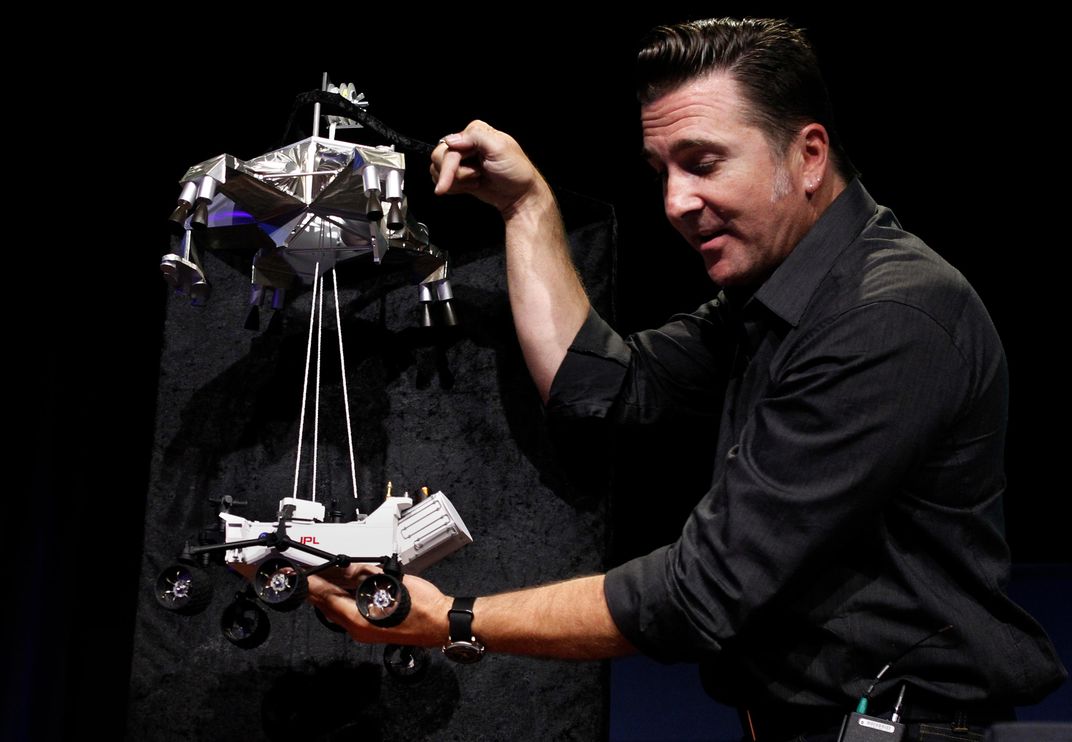
NASA administrator Mike Griffin asked you and some of your team to come to Washington to explain the Sky Crane. The day before this presentation you walked around the Air and Space Museum. What was going through your mind?
The Air and Space Museum is a church for me. The ingenuity and invention that lies in those halls, within those exhibits, is always a source of awe for me. It was like going to church. It was like contemplating the shoulders of giants on which we sat and wondering whether we had it in us to move progress forward.
You and your teammates put years into brainstorming, calculating, testing and designing a plan that would be the most sound, essentially the least crazy. But what, in your mind, was still crazy about it?
One of the challenges we had is the whole system together, including the Sky Crane maneuver, is not testable for us here on Earth. You live in this world of analysis and simulation, and you do your best, but analysis and simulation rarely protect you from sins of omission, from things you have not considered or thought to consider. We got that it looks crazy, as Mike Griffin said. I think the biggest challenge for myself and for others was what if there is an “I forgot.” What if there is a failure of our imagination and there is a failure mode or a phenomena that we don’t understand that’s going to bring us down?
We all identified that there would be very little sympathy for us, because the design that we had chosen was so outlandish. It was so crazy looking that failure of it would immediately result in folks saying, “Of course, I told you so. It’s obvious the thing would have failed.” We felt very exposed. I thought, if this does not work, we might as well go flip burgers, because it’s not going to be pretty.
What was your worst nightmare?
Absolutely, the thing I was most worried about was the thing I didn’t know to be worried about. The team was incredibly capable, so if we could put words to a concern or risk, we uniformly found a way to work that risk down to a place where it was acceptable. I feared the risks we could not put names to, the ones that we didn’t know to be afraid of.
You’ve led teams to make the impossible possible, and you’ve watched others at JPL do the same. So what would you say are the most defining traits and habits of effective leaders?
I think this goes for the leaders and the team. You have to have vigorous intellectual debate. You have to really go for the heart of finding what’s true when you are operating at the edge of what is possible. There isn’t a formula for what the next right steps are, so you have got to have a team that can check itself, interrogate its plans and understand if they are proceeding in the right path. To have vigorous intellectual debate, you need to separate the people from the ideas that the people hold. You need to respect and love and cherish the people and allow the ideas to do brutal intellectual combat.
What do you look for when you are assembling a team?
You don’t have to be aggressive or loud. You can be quiet and even retiring, but you’ve got to be willing to put yourself on the line to search for the truth. That’s what I look for. When I find that in an engineer, I know I’ve got somebody who can really get the rubber to the road.
How can we structure our work environments so that we encourage curiosity and innovation?
Take our work seriously, but do not take ourselves too seriously. I have a three-year-old daughter, and she is assembling an incredibly detailed model of the universe through play. All of us human beings have done that. We came into this world totally unformed, and we learned about gravity and the difference between a solid and a fluid and all sorts of things about the basic structure of our universe through play and experimentation. I try and keep that culture of play alive within the teams that I work, frankly, because that’s how I like to roll.
We understood our complicated spacecraft that changes its shape and puts out parachutes and gets rid of aeroshells and all sorts of stuff as it makes its way through the atmosphere of Mars through a very large complex computer simulation. Using the information and knowledge we have of the system, we would take bets every time we would go to turn the crank on this big computer simulation, which took a few days. The team would take a pool about what the results would say. It was a playful, slightly competitive game of who could use their understanding to get to the answer the fancy set of supercomputers is going to get to before the supercomputers. It was fun. It didn’t feel like work, and what that play was really doing was exercising our understanding of the system, pushing us to stretch more and to understand more deeply that system rather than sitting back and waiting for the computer to tell us what was going on.
I love to play, and I find I learn and discover the most when I am playing. A culture of play is so very important in keeping our curiosity alive.
/https://tf-cmsv2-smithsonianmag-media.s3.amazonaws.com/accounts/headshot/megan.png)



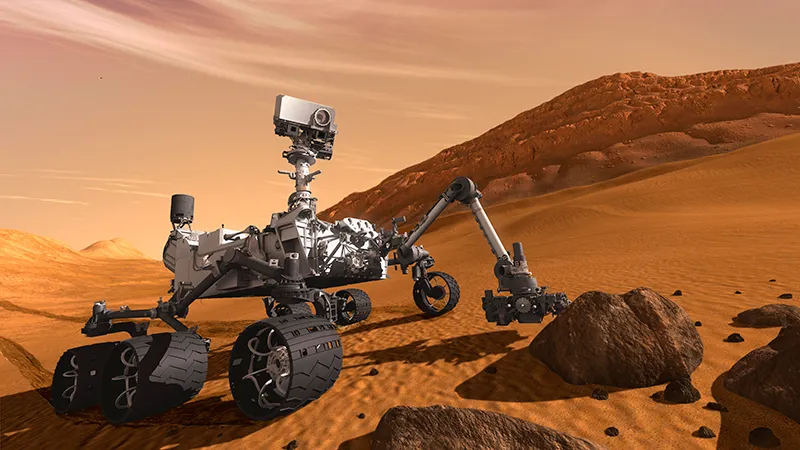
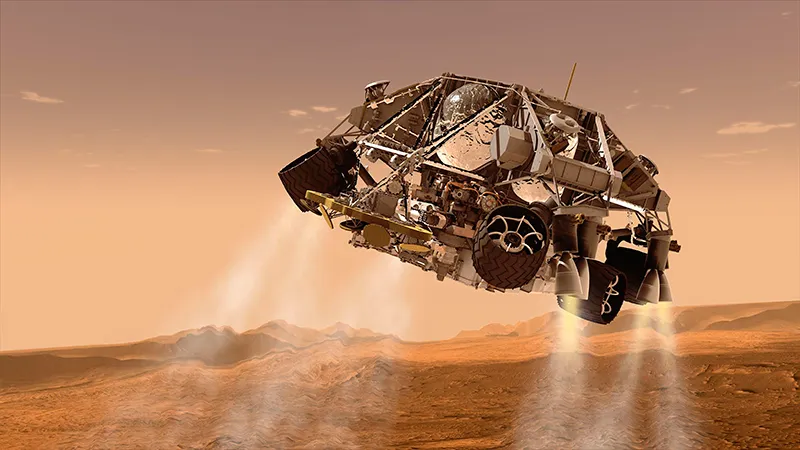
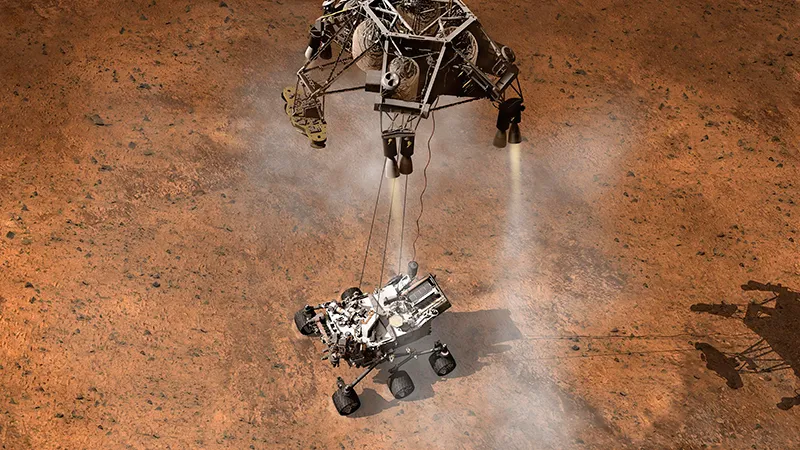
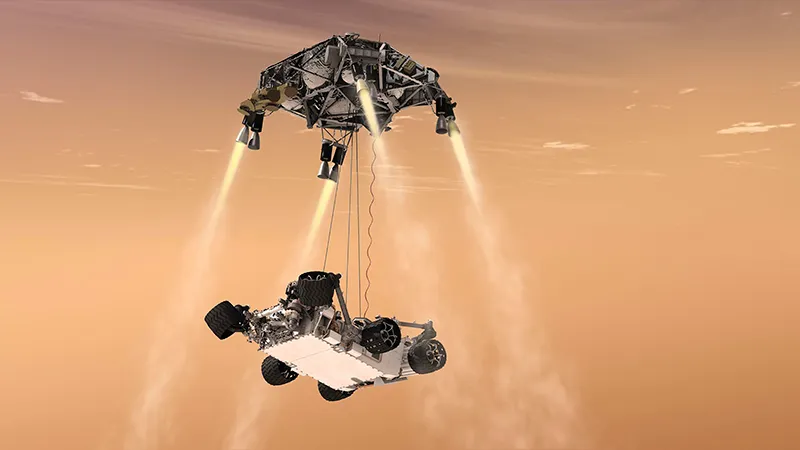
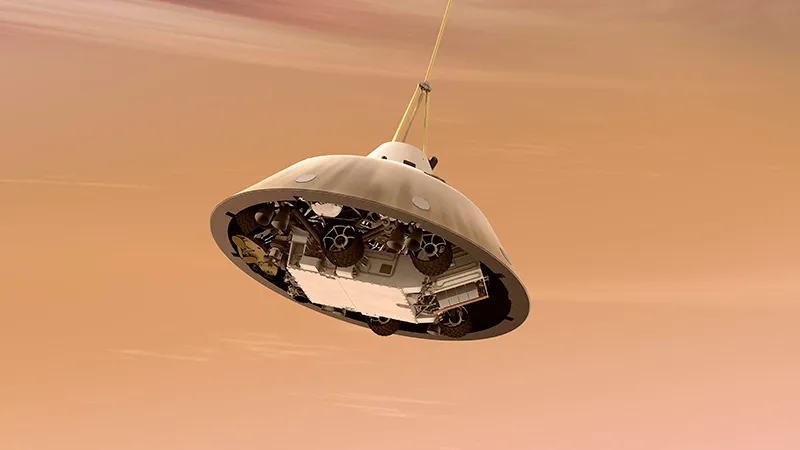
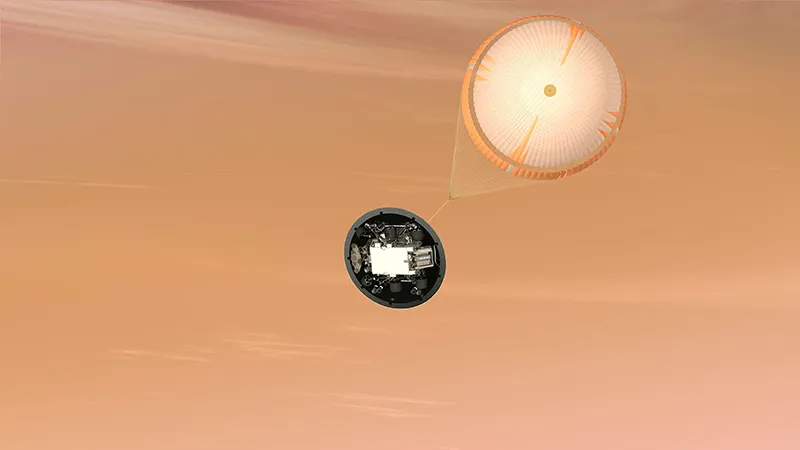
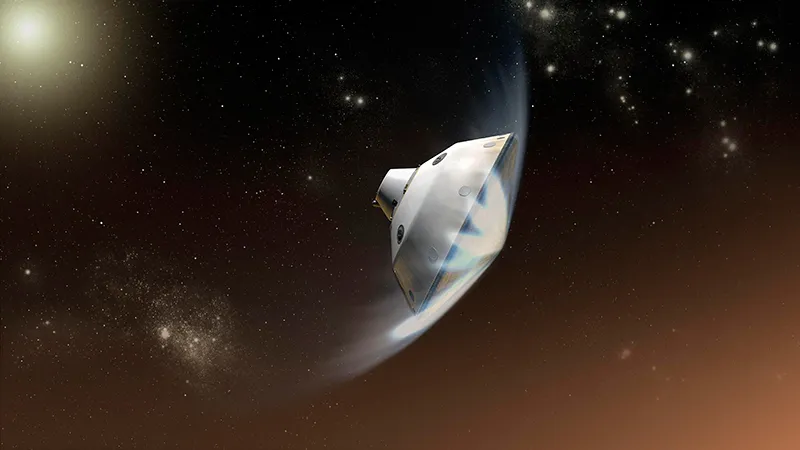
/https://tf-cmsv2-smithsonianmag-media.s3.amazonaws.com/accounts/headshot/megan.png)